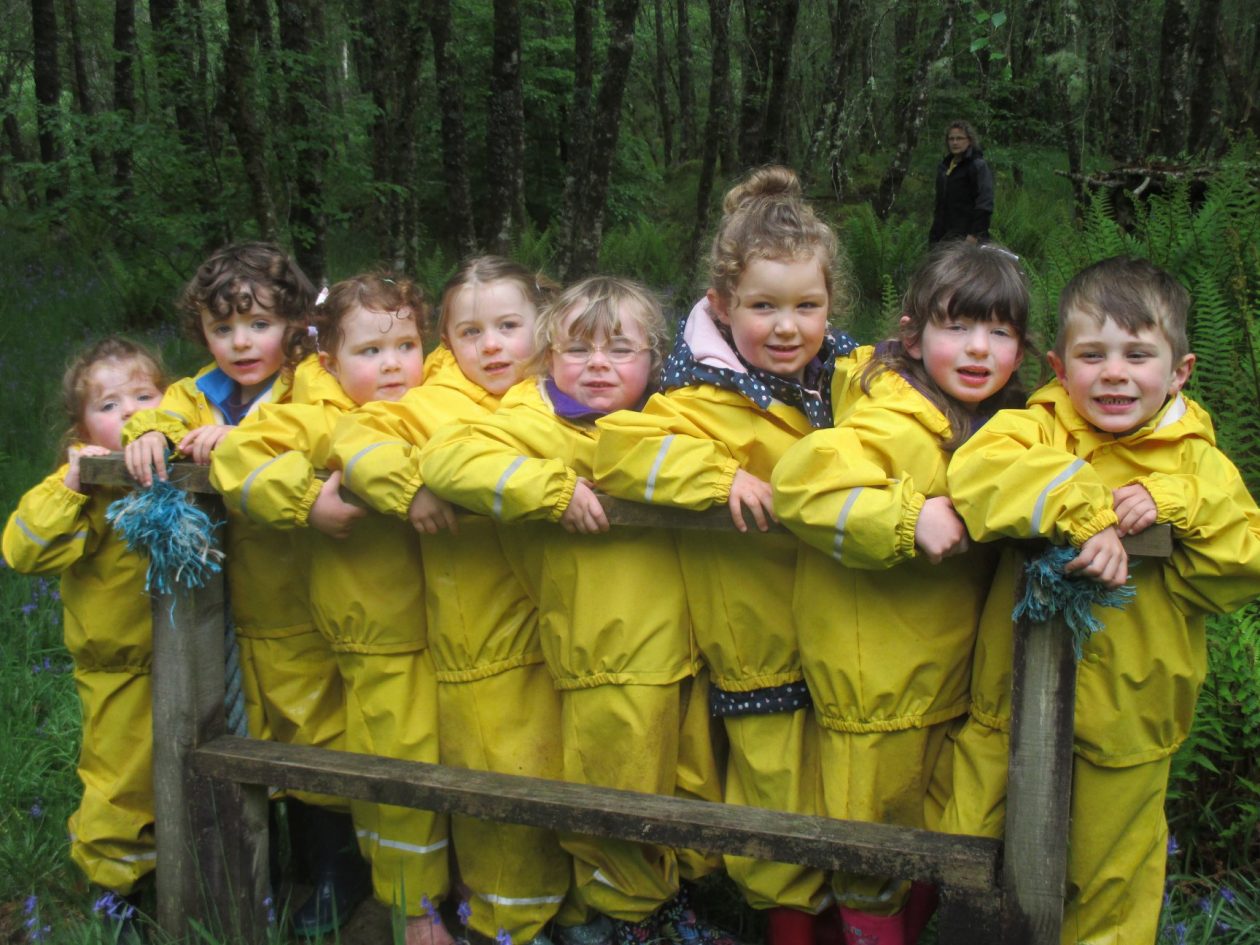Angus Murray MA
Schoolmaster at Taynuilt 1921-1939
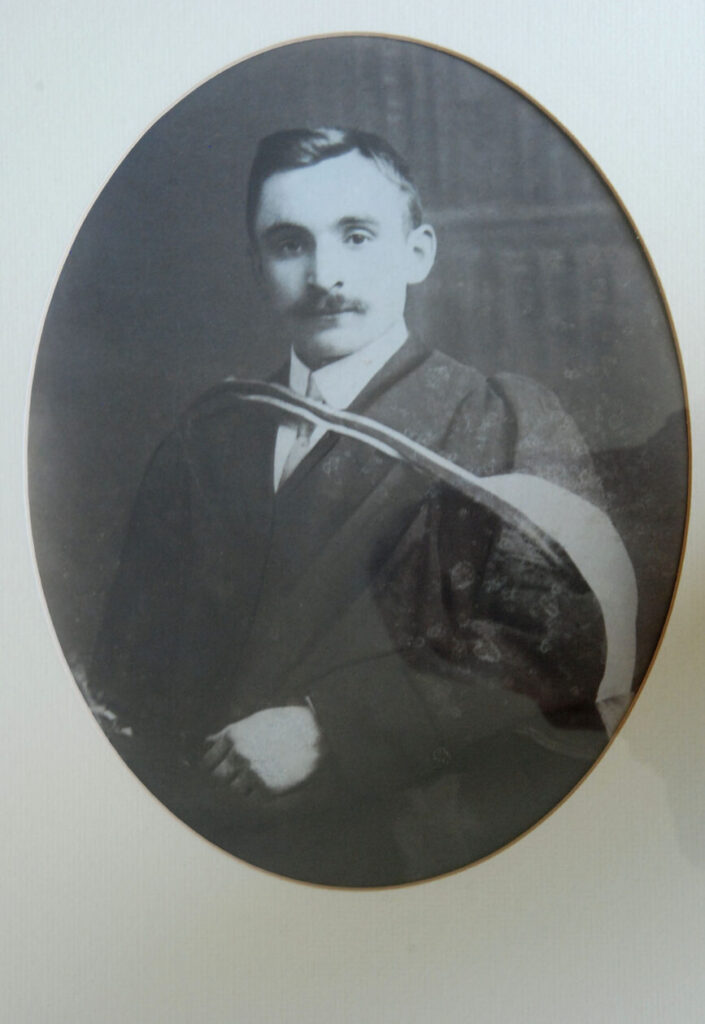
Beginnings
Angus Murray was born in Swainebost in Ness, right at the northern tip of the Isle of Lewis. The Murrays were a bright and capable family and his father (and his father before him), as well as crofting, held the postal contract for the area. The third of eight children, he went to the local public school (probably that at Cross in the next village). As a very bright child, Angus was fortunate to have been born in his particular generation. One generation before, his father-in-law (from Highland Perthshire) had followed the only route then available to poor but bright children – via a pupil teacher role, teacher training in the Free Church of Scotland Training College and on into country schools as a Certificated Teacher. Had Angus been in that generation, however, it would not have been possible for him to access that track from Ness, where schooling was more limited. Without access even to secondary education he might, at best, have ended up in a clerical role in Stornoway, or joined the Police, or the army, or the bank, if he was very fortunate. He was even luckier, though, by being born just in time to sneak through the very beginnings of a new chapter in Lewis.
Stornoway – and Aberdeen
Angus was part of the earliest generation from the outlying parts of Lewis to be able to go to Stornoway to gain some secondary education at the Nicolson Institute. “The Nicolson”, however, was still in a period of development and did not provide access to the Higher Leaving Certificates which were necessary for University entrance. It was possible for the most promising pupils to go to the mainland – some to Inverness Academy and some, like him, to Aberdeen Grammar School. He spent three years at the Grammar School in Aberdeen, completing his secondary education and gaining his entrance qualifications. This long and winding road to University meant that he would be older, at twenty-one, than most in getting there – but get there he did, in 1901.
The only ‘short cut’ of his career was provided by the University of Aberdeen because it was possible during this period to combine a University degree with teacher training. Among the subjects listed in his degree certificate is ‘pedagogy’; so when he graduated with an MA degree in 1903, he was already equipped with his theoretical training. The final step meant moving to his first teaching role which provided the practical experience leading to his ‘Parchment’ or final teacher qualification from the Educational Institute for Scotland.
Teaching – the schools
Angus taught in five schools in all. He started off in the Public School in Coalsnaughton, a mining village near Tillicoutry in Clackmannanshire. After two years, and with that vital ‘Parchment’ in his pocket, he moved on to Bank Street School in Irvine in Ayrshire, teaching the more senior classes there. From Irvine, he headed back to the Gaeltacht, to be headmaster of Staffin School in Skye. During all of this period he was clearly making regular visits home to Lewis, spending the long summers in Swainebost because just after his arrival in Skye he married Robina McGregor, then an Assistant Teacher in Lionel School in Ness. Both his children, daughter Violet and son Kenneth, were born during their time in Staffin.
In 1915, the family left Skye and headed for Argyll where Angus became the Schoolmaster at Dalmally. There are few records from this period, but Argyll had become home and in 1921 he was appointed as the Head Teacher at Taynuilt Public School.
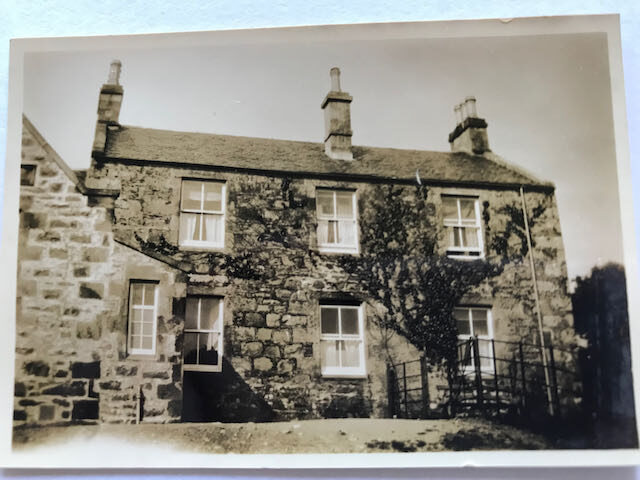
Taynuilt
When he started in Taynuilt in June 1921, the School and adjoining Schoolhouse, stood where the new houses at School Brae now stand – the Schoolhouse at the top just beside the entrance to Muckairn Church and churchyard, and the School beside it with its three classrooms: an Infant room, the ‘Middle Room’, and the Headmaster’s or Senior Room.
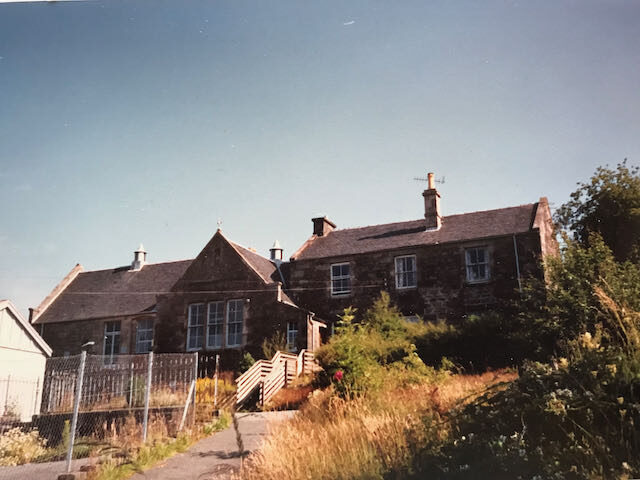
School Numbers
The School Roll was around 120 and, including the Headmaster, there was a staff of four. There were also up to five ‘Side Schools’ : Achnacloich, Inverawe, and around Glenkinglas there were three: Inverliever, Altachoarain, and one at Acharn. (The last three were probably tiny; there was always at least one in Glenkinglas and sometimes more). All of these had to be visited regularly by Mr Murray, and the teachers and work there supported.
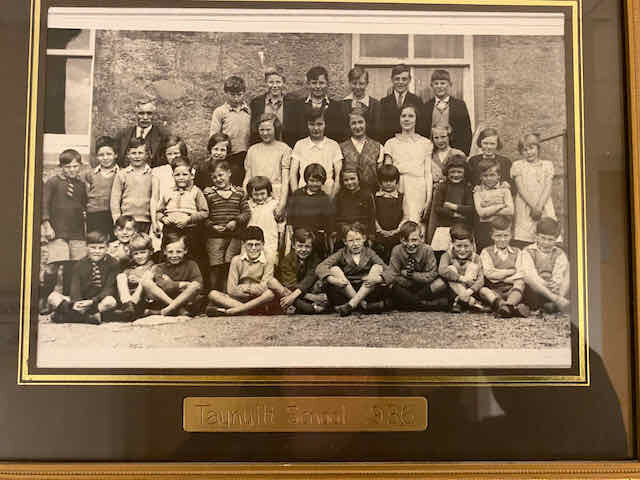
Over the period 1921 to 1939, the pupil numbers fell as the birthrate declined between the wars and so, of course, did the staff complement. By 1929, pupil numbers in the main school had dropped to 72 and staff numbers were reduced from 4 to 3; by 1932, it had a roll of 53 and there were two teachers – Mr Murray himself and Miss Mary MacArthur (who had been with him right throughout his time in Taynuilt and who became the head teacher when he retired, retiring herself in 1945). There is repeated praise in the Reports by the Inspectorate and the Director of Education for the ambitious curriculum which was “much wider in extent than that in many schools with a similar staff” as the two teachers attempted to sustain the same breadth of teaching subjects as there had been with twice their number.

Curriculum
That wide curriculum included, English, Mathematics (Geometry and other branches, as well as Arithmetic), History, Geography, Science (practical as well as theoretical – experiments!), French, Latin, Gaelic, Religious Education or Bible Study, Woodwork, Horticulture (Gardening), Cookery, Needlework, Music and Physical Education.
The last two – music and PE – later benefited from visiting teachers who attended every two to three weeks. There were various visiting PE instructors, but Mr Loynd, the music teacher, was a regular from 1931 onwards.
Pupils were prepared for qualifying examinations (for secondary education) and for bursary competitions. As well as the Annual Inspections by the HMI, there were regular specific checks on some individual subjects notably Bible Study, inspected annually by the two local Ministers, and Horticulture which was inspected by someone from the West of Scotland Agricultural College.
Life at School
For a Headmaster in the early part of the 20th Century, the attendance rate for school pupils was a constant concern. Attendance at school only had only become compulsory after 1872 and in most parts it took quite some years to ensure that it happened. By the 1920s in Taynuilt it was much improved although there was still an ‘Attendance Officer’ assigned to the school to check out the reasons for persistent absences and ensure that the School knew the causes and could attempt to address them. By the mid-1920s, Attendance Officers has disappeared – the challenges, however, had not. The most prominent were the weather and disease. There were frequent drops in attendance due to stormy weather preventing outlying pupils from reaching the school, and illness either seriously reduced attendance or caused the closure of the whole School for a period to try to stem infection. The most serious and frequent were Scarlet Fever, Whooping Cough, Measles, Chicken Pox and influenza. Today vaccines control these among the general population; not then. Then there were the demands of the rural economy. At various regular points in the year, children would be kept away from School to help with potato lifting, haymaking or cattle markets. There were regular official ‘holidays’ for the local Ploughing Match, the Mod, and the Oban Games – but these sometime produced a tendency for those going to them to ‘extend’ their time off school!
Apart from the academic subjects, involvement in sport and music brought school and village together. There is no mention of any instrumental music being taught – there would have been no funding for this. But it was a regular feature of the school timetable and, combined with the teaching of Gaelic, it may have helped in encouraging participation in the local Mod.
The School Sports Day was quite the annual event. In 1925, the Oban Times reported prizes awarded in running, high jump (Mr Murray’s son Kenneth among the winners in both of these), long jump, hop-step-and-leap, vaulting, sack race and three-legged race, all for different age groups and both boys and girls. Afterwards milk, buns, fruit and sweets were distributed to the participants, prizes presented (by Mrs Currie of Inverawe “in her usual gracious manner”), and votes of thanks given. The catering had been master-minded (or, perhaps, mistress-minded) by an impressive band of local ladies, and the teachers were assisted in running the competitions themselves by various local or visiting teachers, including the Rector of Oban High School, plus the doctor, and other local residents – all in all a thoroughly Village Event! The final vote of thanks went to the Taynuilt School teachers “for the trouble they took in getting up the sports”.

Life in the School House
It is plain that both Angus and Robina Murray loved Taynuilt. Angus took his turn at Chairing the Hall Committee, assisted with the Census, joined the local Lodge and fished the river Awe. He retained a deep interest in his native language and close connections with Lewis. The ‘Stornoway Gazette’ and the ‘Oban Times’ were weekly staples all his life, and his notebooks are filled with notes in Gaelic as well in English. He was particularly interested in place names and their derivations and those same notebooks contain a detailed record of the names all the fishing pools on the Awe, in both Gaelic and English, and with notes on any changes over the years. He was the Gaelic Tutor to the Taynuilt Gaelic Choir in which Mrs Murray sang.
Both their children had been taught by their father and then went on to Oban High School. Violet followed her father into primary-teaching (including a spot of teaching cover in Taynuilt in the 1930s); Kenneth trained in medicine and became a chest consultant. Both of them married Lorn locals and retained lifelong links with the area.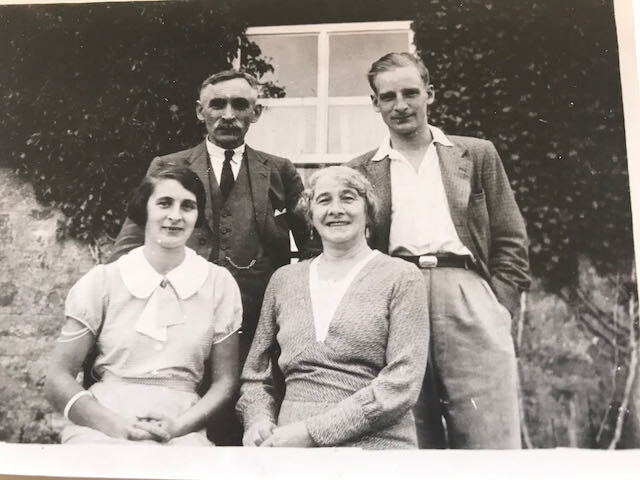
In 1939, it was time for retirement. Shortly after Angus Murray came to Taynuilt in 1921 his pupils were given an afternoon off to attend the unveiling of the Memorial to the men from Taynuilt who had fallen in the First World War. His last week as Head Master saw him receiving and storing the village supply of Gas Masks in readiness for the Second World War, and his last day saw the School being closed temporarily to serve as a ‘receiving station’ for evacuated children, parents and teachers.
After Taynuilt
The Murrays retired to Strachur on Loch Fyne where they spent a happy retirement, making new friends, joining in village life, fishing the loch and enjoying visits from their family. Close links were still always maintained with the Island of Lewis – and now also with Taynuilt. There were new place names to investigate and still the Stornoway Gazette and the Oban Times to be perused.
But Taynuilt was their place. They are buried in Muckairn Churchyard, under Cruachan, yards from where their old Schoolhouse stood – and between the old School and the new one.
Bookends
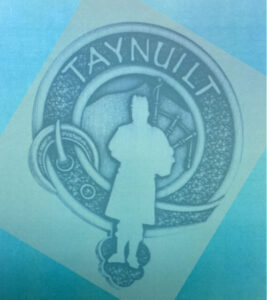
The ‘Bookends’ are two teachers – one in the here and now, and one who came to Taynuilt more than 100 years ago. Berni McMillan, Head Teacher of Taynuilt School is ‘now’, and Angus Murray, also Head Teacher of Taynuilt School, is ‘then’ – from 1921 to 1939. They are joining together (through Angus’s granddaughter who is jointly sponsoring the prize with Berni) to support the music and sporting traditions shared by the school and the village.
Mr Murray was born on the Island of Lewis and was one of the very first from the remoter parts of the island to go to University and to become a teacher. He was a native Gaelic speaker, committed to the language and to the countryside, its names and traditions, as well a teacher who relished and sustained as wide a curriculum as possible in his school. He fished the Awe (recording the names, in English and Gaelic, of all its fishing pools), chaired the Hall Committee, walked the hills and was Gaelic tutor to the Taynuilt Gaelic Choir as well as an indefatigable organiser of the annual school sports.
